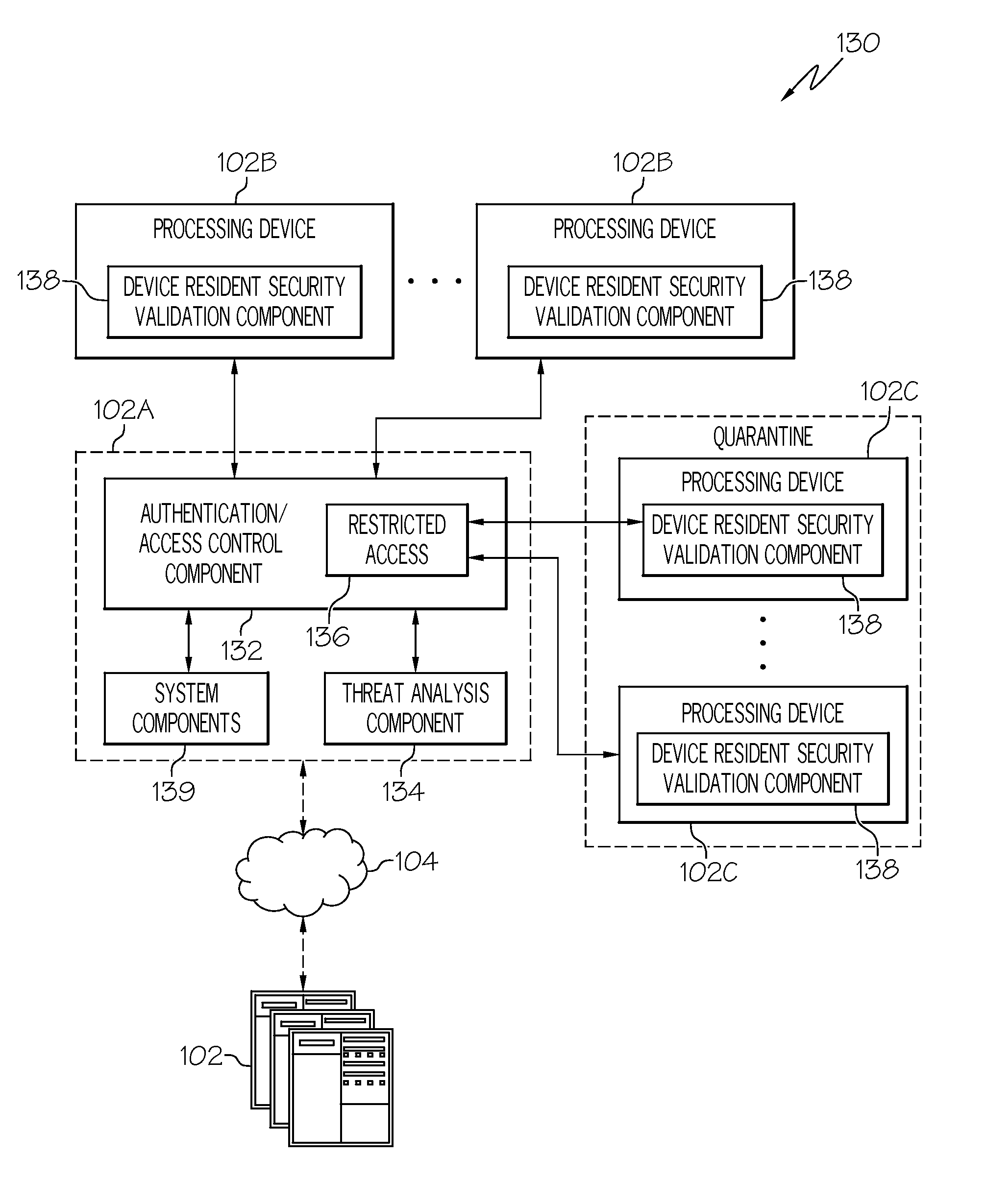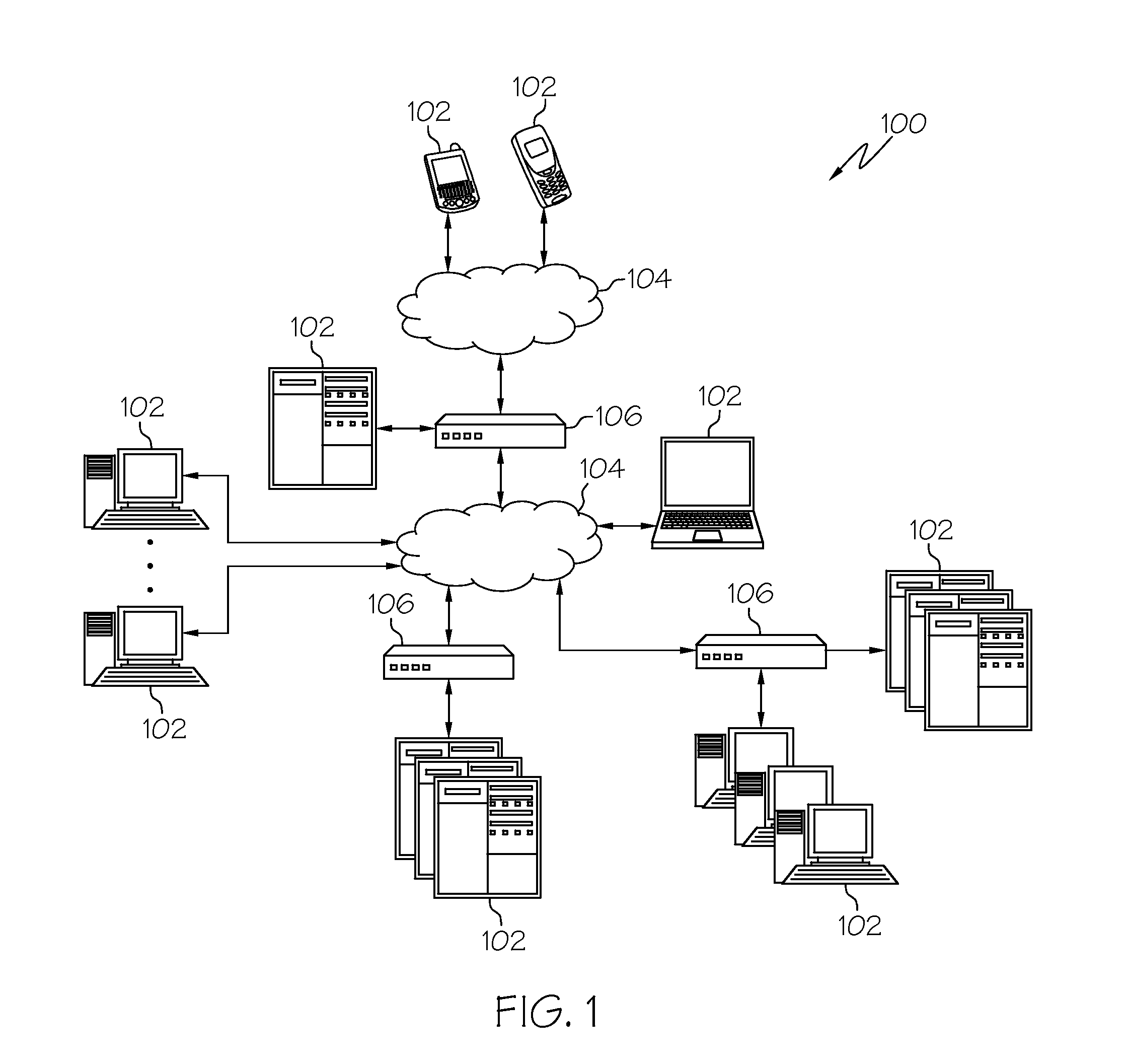Adaptive Autonomic Threat Detection and Quarantine
a technology of autonomic threat detection and quarantine, applied in the direction of unauthorized memory use protection, instruments, error detection/correction, etc., can solve the problems of malware posing a nuisance to the computing environment, burdening network resources, and creating additional challenges for network administrators
- Summary
- Abstract
- Description
- Claims
- Application Information
AI Technical Summary
Benefits of technology
Problems solved by technology
Method used
Image
Examples
Embodiment Construction
[0015]According to various aspects of the present invention, autonomic adaptive threat detection and quarantine of detected threats is implemented in a network computing environment. A threat detection system analyzes network connections to detect connected devices that may be compromised, e.g., devices that are believed to be infected by malware or devices that are believed to be used for malicious or otherwise inappropriate purposes. The threat detection system quarantines devices believed to be compromised, then resolves whether the quarantined device is actually a threat through interaction with a device resident security validation component provided on each quarantined device. Based upon the interaction with quarantined devices, the threat detection system autonomically trains itself to adapt to changing threat conditions, as will be described in greater detail herein.
[0016]The threat detection system according to various aspects of the present invention provides a layer of pr...
PUM
 Login to View More
Login to View More Abstract
Description
Claims
Application Information
 Login to View More
Login to View More - R&D
- Intellectual Property
- Life Sciences
- Materials
- Tech Scout
- Unparalleled Data Quality
- Higher Quality Content
- 60% Fewer Hallucinations
Browse by: Latest US Patents, China's latest patents, Technical Efficacy Thesaurus, Application Domain, Technology Topic, Popular Technical Reports.
© 2025 PatSnap. All rights reserved.Legal|Privacy policy|Modern Slavery Act Transparency Statement|Sitemap|About US| Contact US: help@patsnap.com



